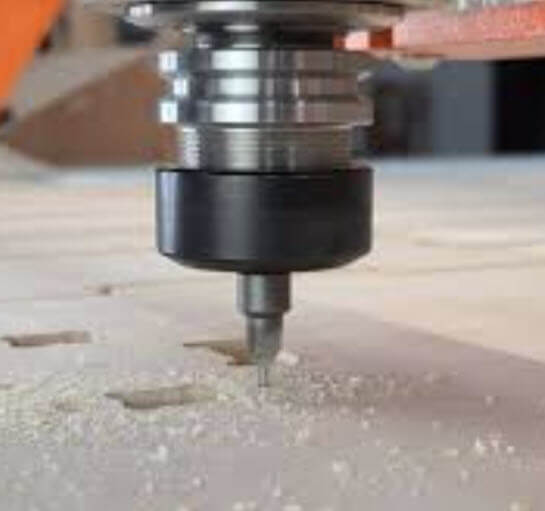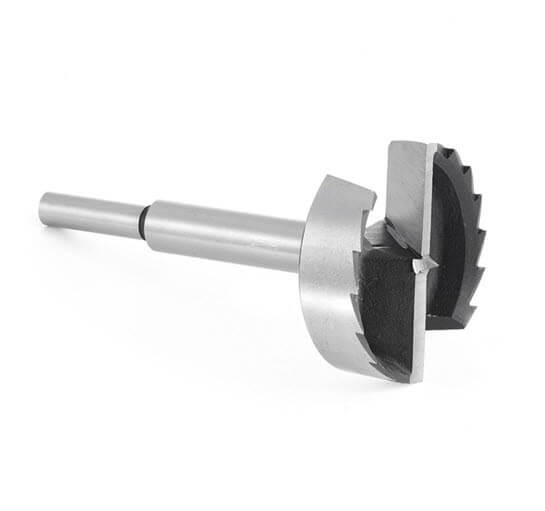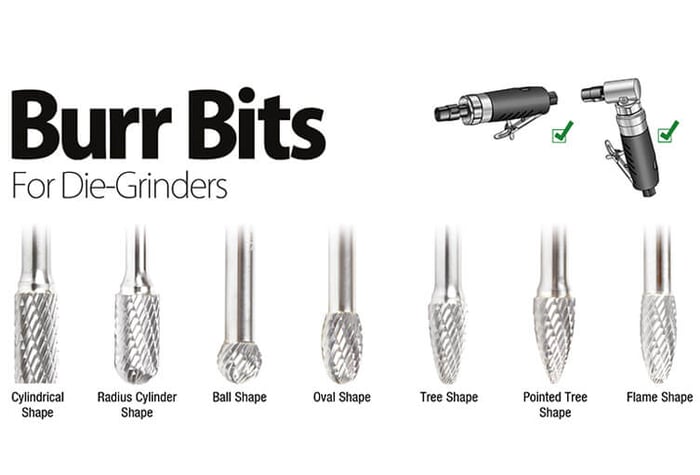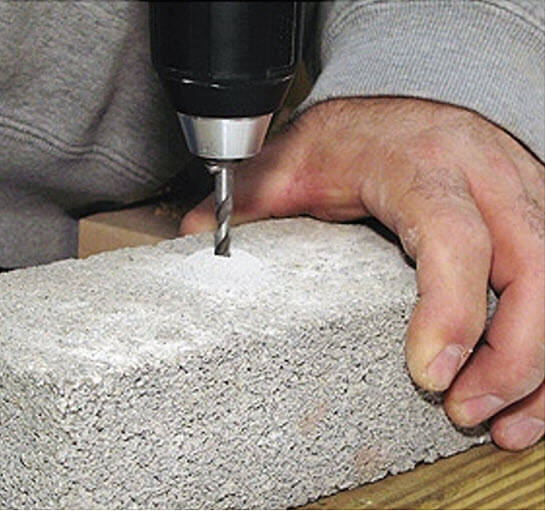
Hammer Drill to Drill Through Concrete
Drilling holes in concrete may seem like a daunting task, one with which an amateur would feel more inclined to call a trained professional. Drilling through harder materials seems more advanced and difficult, but the process can remain simple and safe with the correct tools.
It is important to note, as with all power tools, to make sure that one has the proper ear and eye protection.
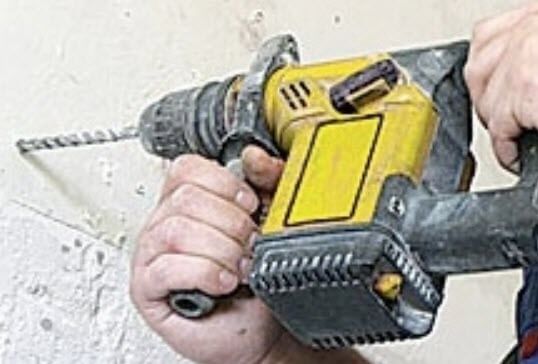
Whether one needs to drill holes to hang a shelf, do some renovations in one’s basement, install lights or complete other do-it-yourself tasks, a hammer drill can be your best friend. The following is a basic overview as to how the hammer drill functions best and how to use it in the most safe and efficient way.
Buying a Hammer Drill
Hammer drills are manufactured by numerous companies, many of which we are familiar with and some no-names. When looking to purchase a reliable and long lasting drill, one should take brand names into account. There are cheaper options, but they tend to have less power and a much shorter life span. Brand names such as Bosch, DeWalt and Makita are known for their resilience, power and good name. It is worth the extra money to invest in a quality product that will last for a long time.
There are certain features to look for when purchasing a hammer drill. These features include: variable speed, hammering function, depth setting, good grip (a handle for your other hand is very helpful) and power. After your purchase, you should become familiar with your hammer drill. As with all tools, one should read through the manual to familiarize oneself with all the functions available.
Selecting the Proper Drill Bit
Drilling through cement board, cinder block and masonry with a hammer drill requires special masonry bits. Select a bit with special carbide tips designed to withstand the impact of hammer drills. For excellent cut quality in concrete, choose either the Masonry Carbide Tipped SDS PLUS Drill Bits or Masonry Carbide Tipped SDS MAX Drill Bits.
On Your Way to Drill
People tend to use hammer drills to drill holes for plastic anchors or to create a hole to feed wires through. Make sure you have a selection of bits to ensure the most accurate size.
Set the Depth
Most hammer drills have a depth stop attached to the drill. Read the user manual and learn how to use it. If your machine does not have a depth gage or you prefer to work without it, a great alternative is to simply wrap tape around your drill bit where you need to stop drilling.
Hold Your Drill Properly
Holding your drill properly is the difference between success and failure in drilling the required hole. If not properly balanced, the drill bit can run leaving you with a much wider diameter. Therefore, it is important to first make sure that you are well balanced. Stand with your feet shoulders width apart and the drill firmly in your grip to where you can lean into it. Have one hand holding the drill like a gun with a finger on the "trigger" and use the other hand to keep the drill level.
Drill
When drilling, make sure that your drill bit is hitting its mark and your bit is perpendicular to the drilling surface. Start the drill on slow and begin to establish a hole where your bit will no longer slip. After establishing this hole, begin to speed up the drill and continue at full speed until you hit your depth. Throughout this drilling, you may create a buildup of dust within the hole that has not been removed through normal drilling.
Please Note
When drilling, it is not too uncommon for the drill to hit a hard spot where drilling becomes very difficult. Do not force your drill too hard. Simply getting a masonry nail and hammering it into the hard spot to break the concrete can enable you to continue on smoothly.
Tips
- Do not bear down on the drill with all your strength. This could cause the bit to break.
- When using a hammer drill, you only need to withdraw the bit occasionally to remove concrete dust.
- Running a small amount of water over the area while drilling will reduce the heat of the bit and the friction between the sides of the concrete and the drill.
- A good quality hammer drill will finish a 2-inch deep, 1/4 inch wide hole in concrete block in less than a minute. A standard drill will take much longer and may not work at all in brick or poured concrete. Use a hammer drill where at all possible.
- While it is possible to drill into concrete or brick with a standard drill, it is not advisable to try.
- A second person holding a vacuum cleaner hose (or half a paper plate taped to the wall) just below the hole you are making may save a lot of time on cleaning up after yourself.
For excellent cut quality in concrete, choose either the Masonry Carbide Tipped SDS PLUS Drill Bits or Masonry Carbide Tipped SDS MAX Drill Bits by Amana Tool.
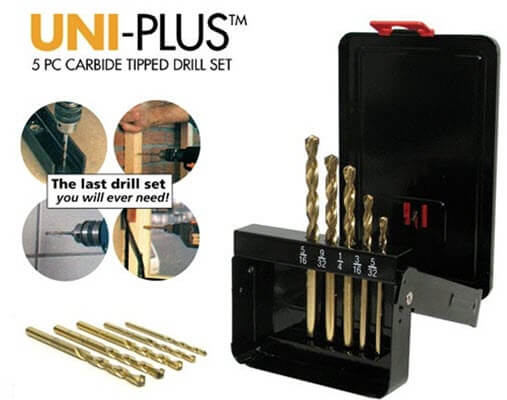
Or, the Amana Tool UNI-5000 5-Piece Carbide Tipped Masonry Drill Bit Set.
FAQs
What is the difference between SDS PLUS and SDS MAX drill bits?
SDS PLUS and SDS MAX refer to different shank types used in hammer drills. SDS PLUS bits are smaller and designed for lighter-duty hammer drills, typically for holes up to 1/2 inch in diameter. SDS MAX bits are larger, used in heavy-duty tools, and ideal for larger-diameter holes or extended drilling in dense concrete. Be sure to match the bit type with your drill’s chuck system.
Can I use a regular drill instead of a hammer drill for concrete?
While it's technically possible to drill into softer concrete or mortar with a standard drill, it's not recommended. Regular drills lack the hammering action needed to efficiently penetrate hard materials like poured concrete or brick. A hammer drill is much more effective and significantly reduces the time and effort required.
How do I know which masonry bit size to use for anchors?
Choose a masonry drill bit that matches the diameter of your anchor. For plastic wall plugs, the bit should match the body of the plug (not the screw). Refer to the anchor packaging for exact size recommendations, or keep a multi-size masonry bit set on hand for flexibility during the project.
Why is concrete dust removal important while drilling?
Concrete dust can clog the hole, increase friction, and reduce the efficiency of your drill. It can also cause overheating. Periodically withdrawing the bit clears debris and helps maintain speed and accuracy. Using a vacuum or a helper to manage dust will also make cleanup easier and extend bit life.
How do I safely drill through extra-hard concrete spots?
If your bit hits a hard aggregate or dense area in the concrete, don’t force the drill. Instead, use a masonry nail and hammer to fracture the tough spot. This allows the bit to continue with less resistance and reduces the risk of damage to your bit or drill.


 Router Bits
Router Bits Spektra Router Bits
Spektra Router Bits Saw Blades
Saw Blades Shaper Cutters
Shaper Cutters Boring & Drilling
Boring & Drilling





 CNC Router Bits
CNC Router Bits CNC Router Bit Sets
CNC Router Bit Sets CNC Machines
CNC Machines CNC Machine Accessories
CNC Machine Accessories Free Vectric® & Fusion 360™ CNC Files
Free Vectric® & Fusion 360™ CNC Files CNC Software
CNC Software CNC Plans Downloads
CNC Plans Downloads CNC Vacuum Table Vacs
CNC Vacuum Table Vacs  Laser Cutters Accessories
Laser Cutters Accessories Laser Cutters
Laser Cutters CNC Sanding Tools
CNC Sanding Tools















































 CNC Machines
CNC Machines Drilling & Screwdriving
Drilling & Screwdriving Filtration, Dust Extractors & Collectors
Filtration, Dust Extractors & Collectors Edge Banders
Edge Banders Joinery Machines
Joinery Machines Jointers & Planers
Jointers & Planers Material Handling
Material Handling Metalworking Tools
Metalworking Tools  Mobile Tool Bases & Universal Stands
Mobile Tool Bases & Universal Stands Oscillating Multi-Tools
Oscillating Multi-Tools Power Tool Accessories
Power Tool Accessories Routers & Shapers
Routers & Shapers Sanders & Polishers
Sanders & Polishers Saws
Saws Wood Turning Machines and Accessories
Wood Turning Machines and Accessories





















































































 Amana Tool
Amana Tool
 Sawstop
Sawstop
 Festool
Festool
 Woodpeckers
Woodpeckers
 Timberline
Timberline
 Stepcraft
Stepcraft
 A.G.E. Series
A.G.E. Series
 Fein
Fein
 Jet
Jet
 VECTRIC
VECTRIC
 Powermatic
Powermatic
 Laguna Tools
Laguna Tools Carbide 3d
Carbide 3d
 Onefinity CNC
Onefinity CNC
 Shaper
Shaper
 xTool
xTool
 AirWeights
AirWeights
 Panto Router
Panto Router
 Black Box Vac
Black Box Vac
 SST
SST
 Jessem
Jessem
 Donek Tools
Donek Tools

























































































